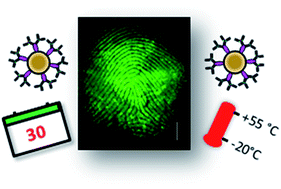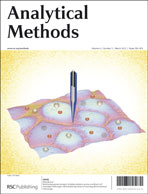Development of aged fingermarks using antibody-magnetic particle conjugates
Abstract
Aged fingermarks are difficult to develop using traditional fingermark methods. Here we use anti-cotinine magnetic particle conjugates combined with fluorescently tagged secondary antibody fragments to develop fingermarks, deposited on glass by a smoker volunteer, that have been aged under four different conditions: at room temperature in the light; room temperature in the dark; at an elevated temperature in the dark (55 °C); and stored within a freezer (−20 °C) in the dark. The anti-cotinine magnetic particle conjugates bound to the ridges of the latent fingermarks of the smoker to produce high resolution brightfield and fluorescence images that were suitable for identification purposes. The antibody-particle conjugates were used to develop fingermarks aged for up to 4 weeks stored under the 4 environmental conditions. The best quality images were obtained when the fingermarks were aged at an elevated temperature of 55 °C. This successful development of aged fingermarks using anti-cotinine magnetic particle conjugates suggests that this method is an excellent alternative to powders or cyanoacrylate (superglue) fuming that are typically used for the development of aged fingermarks.


 Please wait while we load your content...
Please wait while we load your content...